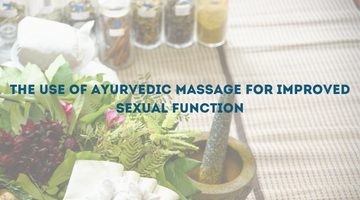
The ancient science of Ayurveda is the world's oldest known form of health care. It is often referred to as the "Mother of All Healing" and it originated in India some 5000 years ago or more
Ayurveda has recently had a significant impact on the world of health care. Take note of this ancient healing system's potential to help those suffering from chronic disease. Furthermore, Ayurveda promises to improve the health and longevity of almost everyone.
Ayurveda is a science of self-awareness. Understanding your own unique nature or constitution can help you understand how you interact with your environment and make choices that will lead to better health.
Tridosha science is the science of understanding our nature or constitution. Tridosha refers to the three fundamental energies or principles that govern our body’s physical and emotional functions. Vata, Pitta, and Kapha are the three energies. Each person has a distinct balance of all three of these energies. Some people predominate in one, while others are a combination of two or more. Let's take a closer look at each of these.
Vata Dosha
The air and ether elements are said to make up the Vata dosha. This means that it shares properties with these elements. Vata is similar to the wind in that it is light, cool, dry, and mobile. People with a Vata nature have more of these qualities in their bodies. Their bodies are light, their bones are thin, and their skin and hair are dry. They frequently move and speak quickly. When they are out of balance, they may lose weight, become constipated, and experience immune and nervous system weakness.
These characteristics are also reflected in their personality. Vata's personalities are talkative, enthusiastic, creative, flexible, and energetic. However, when they are out of balance, they can become easily confused and overwhelmed, have difficulty focusing and making decisions, and have difficulty sleeping. This is especially noticeable when they are under stress. They are emotionally challenged by cool emotions such as worry, fear, and anxiety.
Programs that emphasize the opposing qualities of warmth, heavy nourishment, moistness, and stability are designed to bring Vata into balance. This is reflected in the diet through the consumption of cooked grains such as rice and cooked vegetables, as well as the consumption of warm milk with spices. Pungent herbs such as ginger, which increase internal heat, and nourishing herbs such as ashwagandha help to balance Vata. Ayurvedic programs include color and aroma therapies, detoxification, yoga, and meditation in addition to herbs and diet.
Pitta Dosha
The fire and water elements are said to make up the Pitta dosha. Fire is more prevalent, and those with a pitta nature have many of the qualities of fire within them. Pitta is fiery, sharp, and penetrating. It's also a little volatile and oily. Pitta's oily nature is related to the secondary component of water. Pitta personalities exhibit these characteristics. They have warm skin, penetrating eyes, and sharp features, and they tend to be warm. They have medium weights and good musculature. When they are out of balance, they are prone to diarrhea, infections, skin rashes, liver, spleen, and blood weakness.
These characteristics are also reflected in their personalities. Pittas are intensely focused, competitive, capable, courageous, energetic, and direct communicators who get right to the point. They enjoy problem-solving and dig in their heels when under pressure. They can, however, become overly intense and use a sharp tongue. They make excellent friends but dreadful foes. They are emotionally challenged by the hot emotions of anger, resentment, and jealousy.
Programs are designed to emphasize the opposing qualities of coolness, heavy nourishing, and dryness in order to balance Pitta. Cool spices like fennel are recommended in the diet, along with raw vegetables, cooked rice, wheat, and most beans. Shatavari, a sweet herb, is used to nourish the body, while dandelion root, a bitter herb, is used to temper the fire. A Clinical Ayurvedic Specialist creates programs that include aromas, colors, massage, detoxification, yoga, and meditation in addition to foods and herbs.
Kapha Dosha
The water and earth elements are predominant in the Kapha dosha. Kapha, like these elements, is excellent, moist, stable, and heavy. These characteristics manifest in the body as dense, heavy bones, lustrous, supple skin, a slow metabolism, and large, stocky frames. Furthermore, those with a Kapha personality tend to be calm. When out of balance, Kapha individuals tend to gain weight and have weaknesses in their lungs and sinuses where mucous accumulates. Those with a Kapha temperament are also predisposed to non-insulin-dependent diabetes mellitus.
Water and earth elements are also reflected in the personality. The heavy, stable nature of Kapha reflects a stable personality that is not prone to abrupt changes. Those with a Kapha personality handle stress very well, often without even realizing it. They dislike change, are generally conservative, and prefer to keep things as they are. Those with a Kapha personality seek comfort. This relates to Kapha's soft, watery nature. Too much comfort, on the other hand, can lead to a lack of motivation and a sense of being stuck. When Kapha is out of balance, it produces the heavy emotions of depression and lethargy.
The opposing qualities of lightness, dryness, and warmth are recommended to bring balance to a Kapha nature. These characteristics are incorporated into dietary and herbal programs, aroma and color therapies, detoxification, yoga, and meditation. Grains like quinoa and amaranth are suggested, as are hot spices like cayenne pepper. It is recommended to eat a lot of vegetables and very little nuts or dairy. Cleansing herbs like guggul and pungent herbs like clove balance Kapha.
We must keep in mind that we are all a blend of the three doshic energies. Pitta represents our metabolism, Kapha represents our structure, and Vata represents the mobility that brings action and life into creation. We could not exist without all three energies.
A Clinical Ayurvedic Specialist conducts a two-hour consultation to determine a person's constitution, looking at every aspect of a person. This physical, emotional, and spiritual evaluation determines a person's energy balance and areas of imbalance. Once the nature of the person and the imbalance are determined, the Clinical Ayurvedic Specialist can design a treatment plan that includes the appropriate diet, herbs, aromas, colors, yoga, and meditation to restore or maintain balance.
Ayurvedic Medicine achieves optimal health when we live in complete harmony with our environment. We must first understand our own natures in order to live in harmony. Only then can we make informed decisions that will help us on our journey. Best wishes on yours!
Vata, Pitta, and Kapha are positive forces in the body, but they can increase or decrease beyond what is appropriate for our constitution due to environmental, emotional, or physical conditions, or stress. An imbalance in the body or mind can result from vitiated doshas. This imbalance, or Vikruti, creates an environment conducive to disease. While Prakruti governs permanent traits, Vikruti governs temporary changes such as gaining or losing weight, feeling nervous or irritable, getting a cold or flu, and so on.
We have Health Experts who can easily connect with you and discuss your sexual concerns. You can consult your family doctor first to get the most accurate diagnosis, or you can contact our Health Expert or connect with us at +919867667699.




